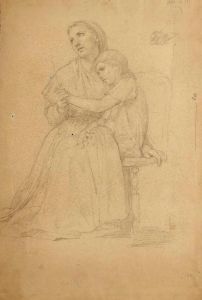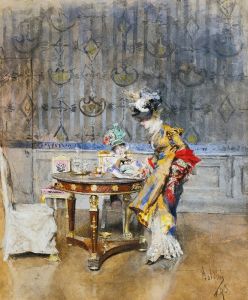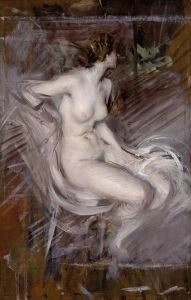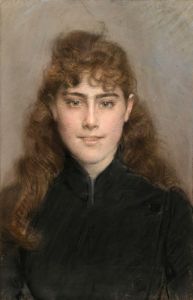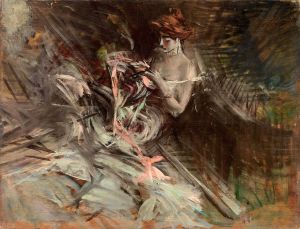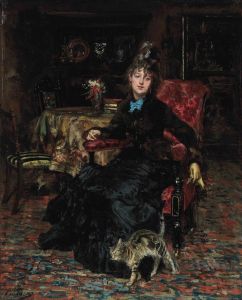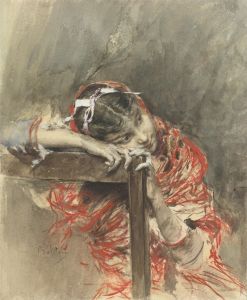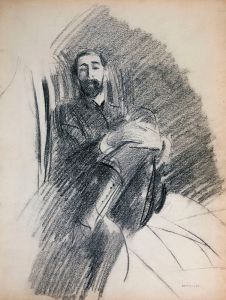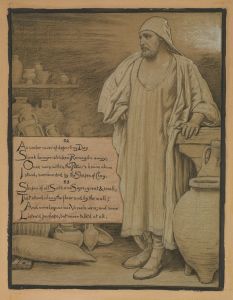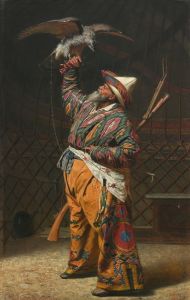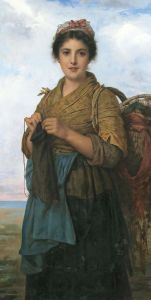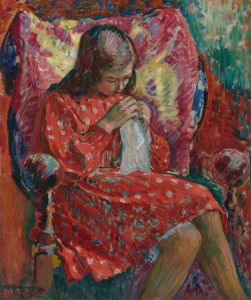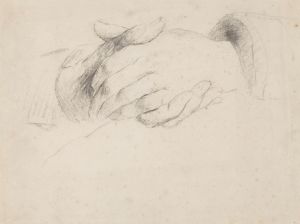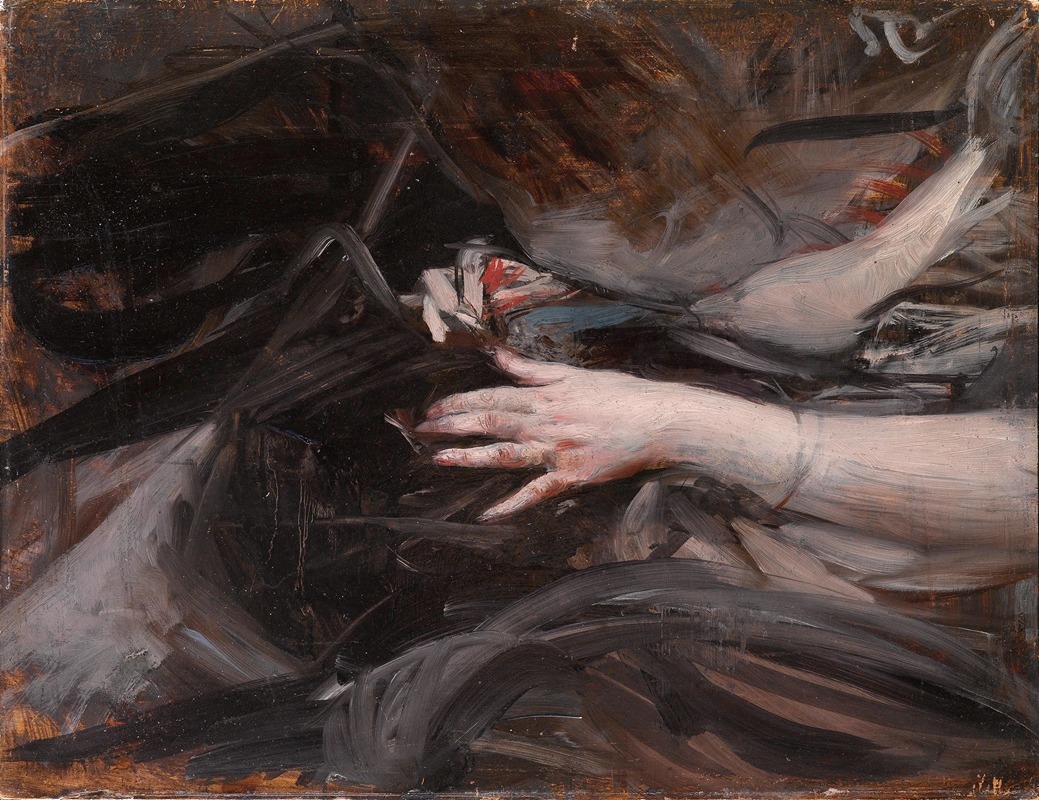
Frauenhände beim Nähen
A hand-painted replica of Giovanni Boldini’s masterpiece Frauenhände beim Nähen, meticulously crafted by professional artists to capture the true essence of the original. Each piece is created with museum-quality canvas and rare mineral pigments, carefully painted by experienced artists with delicate brushstrokes and rich, layered colors to perfectly recreate the texture of the original artwork. Unlike machine-printed reproductions, this hand-painted version brings the painting to life, infused with the artist’s emotions and skill in every stroke. Whether for personal collection or home decoration, it instantly elevates the artistic atmosphere of any space.
Giovanni Boldini was an Italian painter known for his dynamic style and elegant portraiture, particularly during the late 19th and early 20th centuries. One of his works, "Frauenhände beim Nähen" (translated as "Women's Hands Sewing"), exemplifies his keen ability to capture intimate moments with a sense of movement and vitality.
Boldini was born in Ferrara, Italy, in 1842 and later moved to Paris, where he became associated with the Belle Époque, a period characterized by cultural flourishing and artistic innovation. His work often depicted the high society of Paris, capturing the elegance and sophistication of his subjects with a distinctive flair.
"Frauenhände beim Nähen" is a testament to Boldini's skill in portraying everyday scenes with a sense of grace and fluidity. The painting focuses on the hands of a woman engaged in the act of sewing, a common domestic activity. Boldini's brushwork is lively and expressive, bringing a sense of motion to the otherwise still subject. This technique is characteristic of Boldini's style, where he often used loose, sweeping strokes to convey energy and life.
The painting reflects Boldini's interest in capturing the subtleties of human gestures and the beauty of ordinary tasks. By focusing on the hands, Boldini draws attention to the skill and precision involved in sewing, elevating a mundane activity to a subject worthy of artistic exploration. The composition is intimate, inviting viewers to appreciate the quiet concentration and dexterity required in the act of sewing.
Boldini's work is often compared to that of the Impressionists, although he maintained a unique approach that set him apart. While Impressionists like Monet and Renoir focused on the effects of light and color, Boldini was more concerned with the dynamism of his subjects and the elegance of their forms. His portraits and genre scenes are marked by a sense of immediacy and spontaneity, capturing fleeting moments with a vividness that resonates with viewers.
Throughout his career, Boldini achieved significant acclaim, becoming one of the most sought-after portraitists of his time. His ability to convey the personality and vitality of his subjects made him a favorite among the elite, and his works continue to be celebrated for their technical mastery and artistic insight.
"Frauenhände beim Nähen" is a fine example of Boldini's talent for transforming everyday scenes into captivating works of art. Through his dynamic brushwork and keen attention to detail, Boldini invites viewers to appreciate the beauty and artistry inherent in simple, everyday actions. The painting remains a testament to Boldini's enduring legacy as a master of capturing the elegance and vibrancy of life.





